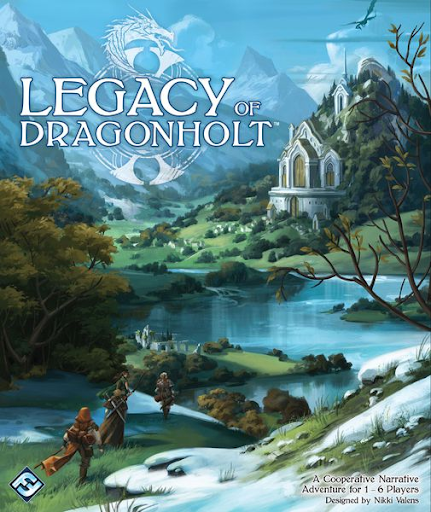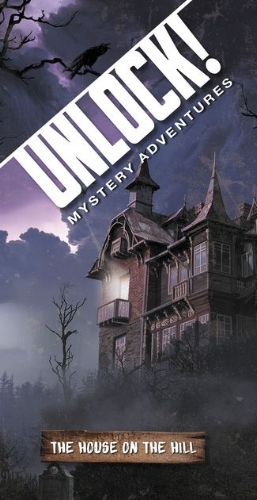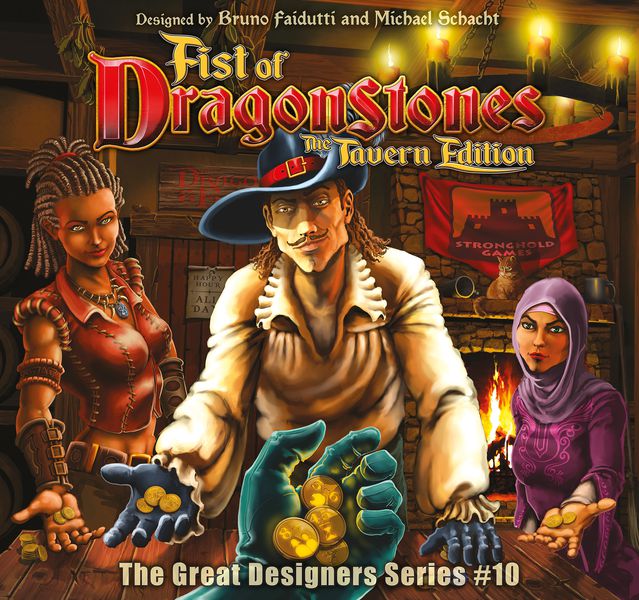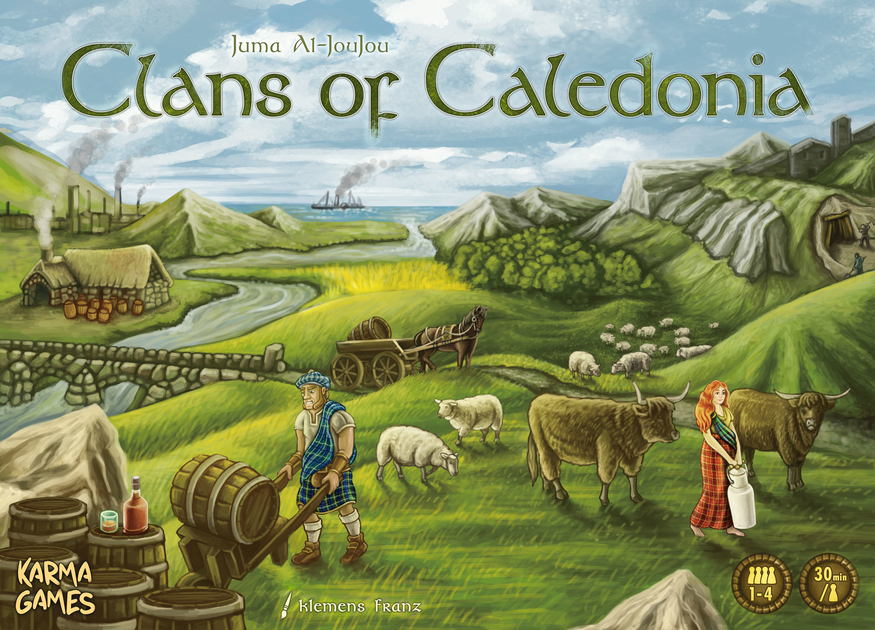Designed by Richard Garfield
Published by Fantasy Flight Games 2018
2 Players ~ 20-30 minutes per game
Review “The Other Side of The Wall” written by Jack Eddy
In covering games for the past two years, I’ve realized that even in the realm of “good games”, there are games that I don’t like and there are games I don’t get. The first group is easier to articulate my feelings on, usually just talking about what doesn’t click with me and thinking about who it is that could appreciate it. The latter group, on the other hand, is much harder to speak to because, by definition, I don’t really get it. Most recently, Gloomhaven was the big offender, a game which on paper should be absolutely up my alley, yet I just cannot fathom why it is so popular.
Now it seems there is a new wedge driving my relationship with the modern gamer asunder; Keyforge.
So, this is going to be a strange review...article… thingy. If you want more straight forward reviews of whether or not a game is good or bad, check out some of our other stuff on the website or video channel. But for today, we are going to be exploring why I just can’t enjoy Keyforge.
Jack Eddy - A History
Hey. Jethro Tull was cool in the 90’s, OK? They won the heavy metal Grammy over METALLICA.
To talk about Keyforge, we have to talk about Magic, and more specifically, my history with the game. Released in 1993, Magic didn’t really make its way to Alaska until Bosco’s Comics was able to get some shipments shortly after Unlimited Edition release in 1994. It just so happened that my brother Brian and I were die-hard patrons of Bosco’s, being our primary outlet for both X-men comics and fantasy related tabletop games like Warhammer, AD&D and Heroquest.
Throughout the following years, Brian and I held varying degrees of interest in Magic, but both of us maintained independent collections until our adulthood. Brian focused largely on the tournament scene, where he ended up winning a local regional before playing in nationals, with the trip sponsored by, you guessed it, Bosco’s comics (who eventually employed us both). I was more into the casual game, always less disciplined and yet thematically focused than my brother; I cared about the stories on the table. Magic defined my social circle and eventually became a way that I fostered relationships with youth when I worked at my local Boys & Girls Club.
As we got older, our interest in Magic waned. I became more dedicated to AEG’s Legend of the Five Rings, and eventually gave up CCGs in favor of singular boxed board games that make up the bulk of our coverage on the site. I’ve still maintained an interest for constructible card games, even “getting in” at the ground floor with the excellent cooperative Lord of the Rings: The Card Game and the sadly deceased Android: Netrunner, but I’ve never committed to an ongoing and dedicated passion for a card game, or any game really, as I did for L5R and Magic.
I’ve thought long and hard about why it is I like these games and I think it really comes down to ownership, that the deck I’m playing is my deck. From Magic to L5R to LotR to Netrunner, even the preconstructed decks or those who were built based on deck lists online, I had choice and agency; the freedom to make up for their faults, play to their strengths, and adapt them with future card pools. This ownership extended to the thematic aspects of the game, too. Creatures and Samurai that hit the battlefield were heroes storming to my aid, fighting and dying to exert my will, creating unique and fantastic battles with each action.
That is not, and was never intended to be, this game.
Every Keyforge deck has a unique back with the procedurally generated deck name. For what it’s worth, Shadi’s a 10.
WTF is Keyforge?
In a year full of WTF moments, Keyforge stands out as my most perplexing gaming announcement of 2018. After finally wrapping my brain around what the game even was, my reaction was akin to The Who’s infamous reaction to The New Yardbirds - “The New Yardbirds? Yeah, that’ll go over like a Led Zeppelin.” Also like the Who, I was very wrong.
At the time of announcement, my basic understanding was that Richard Garfield of Magic: The Gathering and Netrunner fame was making a new card game for Fantasy Flight where every deck was unique and every card in said deck would be marked so that it could not be used in any constructible format. The concept was baffling. How could anything be balanced if the decks were algorithmically generated? Where is the value in a rigid deck of cards that cannot be reassembled? How could any deck have a distinct personality or convey a story if it wasn’t crafted to do so?
Turns out that I was right about what the game is but largely wrong about what the game would be. Having played several games with multiple decks, it seems more or less balanced. There are even clever mechanics that could aid the underdog if one deck seems particularly strong against another, such as adding a handicap by means of “chains”, limiting a deck’s drawing capabilities. As for the value, the game is just like any other boxed game with no constructible elements, yet I don’t seem to have a grudge against Settlers of Catan for its lack of flexibility or absence of constructible sheep engines.
For me, the most revelatory thing about playing the game was the immediacy of effects and the unconventional game objective. Unlike most card games, players in Keyforge do not have a life total. Instead, you are collecting pools of Aember, which can be constructed into keys if you have six or more at the start of your turn; forge three keys and you win the game. There are few things that mess with your already-constructed keys, but there’s about a gagillion things that mess with your Aember, so you gotta keep on eye on it.
As for the immediacy, your hand refills every turn, cards have no cost, and you can use all of your toys in play… as long as you activate the house they are associated with (which also happens to be the basic choice that informs tactical play). Every deck is composed of an equal amount of cards from three of Keyforges houses, and each turn, you declare which house you are acting as and can then play and use any cards relating to your house, though creatures and artifacts entering the battlefield has this game’s own version of “summoning sickness”, so that house will need to be reactivated later to get use out of your stompy badasses.
This freedom that has you dumping cards onto the table and slinging spells with reckless abandon certainly sets the game apart, and I gotta admit, it modernizes the distinctively oldschool tropes of Magic and pretty much every constructible card game after it, making it feel both fresh and unique.
So why can’t I enjoy it?
OK, what’s going on. Focus. Man, I wish I had a quesadilla.
Empty Calories
Each turn of Keyforge feels like fast food, filling yet never really satisfying. I’m hard pressed to care about what happens for a multitude of reasons.
The first hurdle is my own attachment issues. If I put “Blogwrath the Barbarian” into play, I want him to be useful, I want to feel so proud of Blogwrath and his incredible capability for murderous destruction. But inevitably, even if I put in Blogwrath and five of his similarly bloodthirsty friends into play, on my opponent’s turn, most of them vanish. There are so many cards and effects that wipe creatures away from the board, and when you do fight in this game, you have your creatures attack your opponent’s creatures directly; you don’t have a life total to target. This wouldn’t be so bad if there was something that I could choose to do on my opponent’s turn, like elect to defend, resolve some effects, or cast some spells… but nope, I’m at the distinctive mercy of my opponent, so, yeah, whatever. I guess I’ll figure out what I’m doing with the one or two remaining members of Blogwrath’s merry band next turn.
But when I do get a turn where it just so happened that Blogwrath survived, I’m faced with a terrible choice. Do I do fun stuff with the cards in my hand, or do I use Blogwrath? Chances are, I can’t do both due to the house restriction on the cards. There will be times where Blogwrath gets to have his fun, where the cards in my hand match his house, or maybe I have some activated abilities that let me play off-house, but more often than not, I am left to look at the few toys I have left and elect not to use them because the smarter and more prudent thing is to abandon any plans I made last turn and bust out some new cards this turn.
The last thing that really kills Keyforge for me is a bit more esoteric. When I buy a Keyforge deck, I have to trust in the algorithm. I have to trust that this deck is probably going to do okay and have a chance of winning against other decks. Sure, it’ll have weaknesses, but in the hands of a good player this deck will be competitive in a large enough pool. But what if it’s not? What if I just have a less effective combination of cards?
Farewell, my friends.
This last hurdle is purely conjecture based on my own bias, and I have no real data to back it up other than playing 12 or so games. But, there is always going to be a piece of me that wonders “did I lose because I’m bad? Did I lose because I didn't get the right draw? Or did I lose because this deck is objectively worse than my opponent’s?” and that last part, no matter how unlikely, is what’ll always kill Keyforge for me.
I know, I know, you’ll be all like “in Magic you buy blind packs to participate in drafts, which can result in objectively better and worse decks. And what about those pre-con decks that you say you’re cool with?” With the pre-constructed Magic stuff, I’m generally assuming that these decks are tightly crafted and made to face off with one another. Furthermore, whether it’s draft, constructed, sealed deck, or just using pre-cons, I know that even if I’m at a disadvantage, I can re-tool my deck to make it better or more suited to my playstyle.
Stripping that ability from me in a game where I’m still buying blind packs just makes me incredibly apathetic to anything happening on the table. When I pick the best actions to take on a turn, I don’t feel like I’m playing to win, I feel like I’m carrying out an algorithm. It’s fatalistic, but it’s honest.
Apples & Oranges
Let’s back up. Let’s get away from everything you just read. My contrived tale of childhood discovery? Throw it out the window.
The moment to moment in Keyforge is so full of decisions with real impact on the game state. This is a tactical bonanza where you’re constantly shifting with the ebb and flow of new threats and altered capabilities. There is no ramp up, there is no mana-screw. Every turn you are empowered to make full use of a full hand and every card on the table, so long as they fall into one of those three houses. From turn one, you and your opponent are like those rad gang members in the Beat It music video taking swipes at one another; reacting to the shared tension.
There is such a good skirmish game here, where if you block out the comparisons to the past, how decks were created, or the questionably risky expense in buying blind packs, you can see that it is an interesting and bold take on the genre. Maybe not one I care for, but still ambitious and credible nonetheless.
There is a reason why there is such a fervor for this game, and why FFG has made this their follow up to Netrunner; and it isn’t just because it’s an insidious way for people to spend their money. If I ignore the trappings, I can almost taste the succulent fat contained within a well played turn of Keyforge; but like Cypher’s steak, the taste is meaningless when I start seeing through the matrix.
By bringing in Richard Garfield, by selling these as blind packs, by having all of the trappings of an environment full of preconstructed decks without any of the ability to actually construct, FFG invited this comparison, even if it unfairly represents the game to grey-beards like me.
Final Thoughts
It feels strange to acknowledge that my main criticisms of Keyforge are based on what I want the game to be rather than divorcing myself from the past and evaluating the game purely for what the game actually is, but I don’t live in a vacuum, and I have a feeling my sentiment may be shared by at least a couple people out there.
I wish that I could say a perspective shift would endear me to the game more, but I just don’t see that happening. Even when I root for it to convince me otherwise, win or loss, every game of Keyforge has felt somewhat gratifying in the moment, but completely hollow in its conclusion. It may do a lot of things, it just never made me care.
Interested in more Keyforge? Got some beef? We’ll have a Keyforge final thoughts & review Q&A video up on our channel, https://youtube.com/TheCardboardHerald soon.
Other recent written reviews:






































